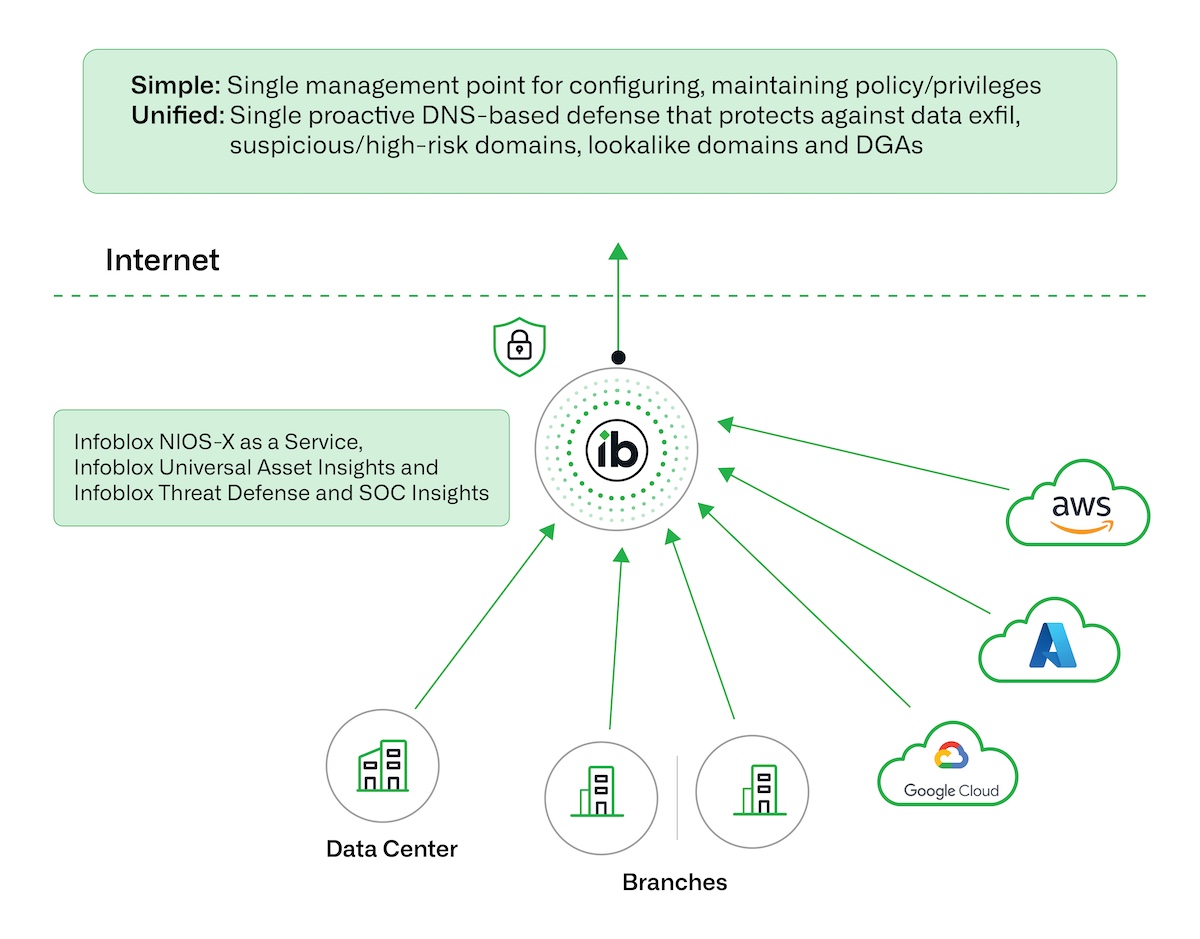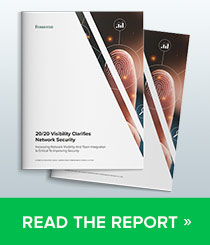The rapid adoption of multi-cloud, along with continued existence of on-premises locations such as datacenters, campus and branch locations, has led to an expanding attack surface. According to Gartner, by 2026, more than 90 percent of enterprises will extend their capabilities to multi-cloud environments.1 An average business uses three or more cloud providers while still having an on-premises footprint.
This reality means organizations have to deal with a complex web of disparate network configurations and interfaces, while separately setting and maintaining security policy for each environment. Organizations try to protect these diverse scenarios with a complex web of security tools. This approach is not ideal as SecOps struggle with difficult deployments, incomplete visibility and fragmented/slow response to threats, leaving them exposed to evolving threats.
The key to overcoming these challenges lies in using solutions that provide a single management point for configuring and maintaining policy/privileges, comprehensive view of assets across the entire hybrid multi-cloud infrastructure and in adopting a preemptive security approach to mitigate threats.
The Infoblox solution that includes Infoblox Universal DDI™ Product Suite, Infoblox Universal Asset Insights™ and Infoblox Threat Defense™ is reshaping the approach to securing hybrid multi-cloud networks. By focusing on a simple management point for configuring, deploying and managing DNS, comprehensive visibility and DNS-focused threat intelligence, organizations can streamline their management and security efforts, reduce operational overhead and, most importantly, stay ahead of emerging threats.
Challenges
- Difficult, Complex Deployments
- In hybrid, multi-cloud environments, security tools often operate in silos, each managing a specific part of the infrastructure. Security teams must juggle multiple security deployments, including firewalls and SASE solutions. For private apps, it’s essential to implement specific solutions or modify the SD-WAN solution to ensure remote sites are adequately protected when using private apps. Most SASE solutions are focused on securing user access to cloud applications. However, to protect application to internet connectivity, companies need to use virtual firewalls, IaaS-provided security or technologies such as a cloud-native application protection platform (CNAPP). All this increases operational overhead. There is a need for a universal method to protect everything, everywhere in a simple manner.
- Fragmented, Slow Response
- When security teams need to respond to threats by updating security policies—such as blocking a malicious domain—they must navigate multiple management interfaces and APIs. Each component, from on-premises DNS servers to cloud-native DNS services, DNS firewalls and threat intelligence platforms, requires separate updates. This fragmentation not only increases complexity but also significantly impacts response time, leaving organizations vulnerable during the window between threat detection and comprehensive policy deployment across all systems.
- Triage and correlation for detected events is manual and slow due to the lack of easy attribution to devices/cloud workloads that could be compromised.
- Incomplete Visibility
- You cannot secure what you cannot see. Assets are often distributed across on-premises networks and public and private clouds, which makes having a clear, unified view of the entire attack surface extremely difficult.
- Traditional methods of monitoring and management often fail to provide the holistic visibility required to secure every asset. For example, user devices, cloud workloads and IoT/OT devices might all operate in separate silos with no consistent means of oversight.
- Without a clear understanding of which assets exist across the network and where vulnerabilities lie, companies are left in the dark when it comes to detecting and mitigating threats.
- Reactive Defense: The Perils of Waiting for the “Boom”
- Traditional security models are inherently reactive. Many security solutions focus on detecting and mitigating threats after they have already been activated. These approaches typically identify malware or security breaches only after they have been executed in the system—often when the damage has already started.
- The problem with reactive defense is that modern malware is constantly evolving. Threat actors are adept at morphing their malware to bypass detection mechanisms and often use AI to create variants at a significantly fast pace, making it harder for conventional security tools to keep up. This “wait till the boom” mentality leads to delays in threat detection and response.
- By the time security teams detect an attack, it’s often too late to prevent significant damage. On average, it takes security teams 258 days to identify and contain a breach according to IBM’s 2024 Cost of a Data Breach Report—which results in a significant rise in overall breach costs and operational disruptions.
Universal Method to Protect Everything, Everywhere in a Simple Way
The above challenges highlight the need for a universal method to protect everything, everywhere in a simple manner that doesn’t rely on a complex web of fragmented security deployments. It starts with the first step of unifying the DNS management using a single integration point that seamlessly covers everything—your data centers, branch offices and all major public cloud environments. Think of it as having one management plane for all your DNS, rather than separate ones for each location. This dramatically simplifies operations. Then, adding Protective DNS on top of this unified management plane can provide preemptive threat defense across your environment, without the need for disparate security solutions for each part of the network.
Preemptive Security: A DNS-Centric Approach
One of the most powerful elements of the Infoblox security suite is its ability to leverage DNS data for threat detection. DNS threat intelligence enables Infoblox to identify and block high-risk domains owned by threat actors before they are even activated. It works by continuously monitoring domain registrations and DNS queries to identify attacker infrastructure. By identifying high-risk domains before they are used for attack, Infoblox can prevent attacks “left-of-boom,” significantly reducing the likelihood of a successful breach.
Whether it’s blocking phishing and ransomware domains, identifying Domain Generation Algorithms (DGAs) or protecting against zero-day DNS attacks, Infoblox’s approach not only protects the company’s assets from the latest threats but also reduces the operational cost associated with post-breach remediation.
In fact, DNS threat intelligence can identify threats on an average 63 days earlier than conventional endpoint detection and response (EDR) or next-generation firewalls (NGFWs), which typically detect threats only after the attack has been executed.
Solution: Unified Security Interception and Enforcement Point with Infoblox
Only Infoblox provides a unified platform for managing DNS and security policies across on-premises, remote and cloud using best-of-breed network services (DNS, DHCP and IP address management) and best-of-breed Protective DNS.
- Infoblox Universal DDI can intercept traffic from cloud, on-premises or remote/mobile devices in a simple, yet effective way that pairs frictionlessly with your network services. This replaces multiple management interfaces for DNS across your hybrid multi-cloud infrastructure.
- Infoblox Universal Asset Insights automates the discovery and continuous monitoring of assets across an organization’s entire infrastructure. By gaining a comprehensive view that spans from public cloud to on-premises and IoT devices, network teams can ensure that their asset lists are continuously updated without manual intervention, reducing the risk of blind spots, such as dangling DNS/CNAME, zombie assets, internet-exposed virtual servers or S3 buckets. In addition, asset insights can provide easy device or cloud workload attribution when malicious activity is detected, making it easy for incident responders to identify potentially compromised assets.
- Infoblox Threat Defense uses DNS threat intelligence that focuses on “left-of-boom” detection by identifying threat actor-owned high-risk domains before they are weaponized, preventing attacks from reaching workloads or systems in the first place. This approach allows Infoblox to block 75 percent of threats even before the first DNS query ever reaches a malicious domain from an enterprise, significantly reducing the window for potential harm.
- Universal DDI with Threat Defense transforms the fragmented security landscape by providing a single pane of glass for threat detection and response. Instead of wrestling with multiple interfaces to update security policies—from on-premises DNS servers to cloud-native DNS services and various security tools—security teams can now deploy and enforce single, consistent policy through one central management plane. This unified approach dramatically accelerates threat response time, as policy updates are automatically propagated across all environments, whether in your data center, branch offices or major public cloud platforms. By eliminating the complexity of managing multiple disparate systems, organizations can respond to threats more quickly and ensure consistent security enforcement across their entire hybrid multi-cloud infrastructure. As the DDI industry’s first true as-a-Service DDI solution, Infoblox NIOS-X as a Service, as part of Universal DDI, deploys in minutes without requiring any customer-side infrastructure, offering radical simplicity and elastic scalability that traditional solutions can’t match. Organizations can modernize their existing DNS infrastructure, consolidate cloud-native DNS services onto one unified platform and optimize branch operations—all while leveraging the integration between infrastructure-as-code products, like Terraform and NIOS-X as a Service, for streamlined multi-cloud automation.

Figure 1. A unified security interception point to secure hybrid multi-cloud environments
Business Benefits
By implementing Infoblox’s unified DNS management and security solution, companies stand to gain several tangible business benefits:
- Fast Time to Value: Infoblox’s infrastructure-free deployment model allows for rapid deployment in minutes, not weeks or months, ensuring that your enterprise is protected from day one. Furthermore, with a growing network of Points of Presence (POPs) around the globe, Infoblox ensures that organizations have the performance they need, no matter where they operate.
- Preemptive Security: Unlike traditional security systems that react to threats after the fact, Infoblox’s DNS threat intelligence blocks threats before they even reach the enterprise. This approach reduces the time to detect and remediate threats, cutting down the risk and cost of breaches. And you don’t have to deploy it individually in each of your environments. With a single enforcement point, you can protect your entire enterprise—whether in the cloud or on-premises.
- Faster Incident Response with Workload Attribution: By integrating asset insight information with security enforcement, the solution provides an easy and automated alert attribution to quickly identify which workloads originated malicious activity, drastically speeding up incident response.
- Best of Both Worlds: One of the most significant challenges is balancing robust protection with the need for speed and agility. CloudOps teams need to be able to move quickly, while SecOps teams need strong security measures in place. Infoblox’s unified platform enables both teams to operate efficiently without compromising on security. The solution’s API-driven agility ensures that your cloud infrastructure remains flexible and responsive, while still maintaining consistent security.








